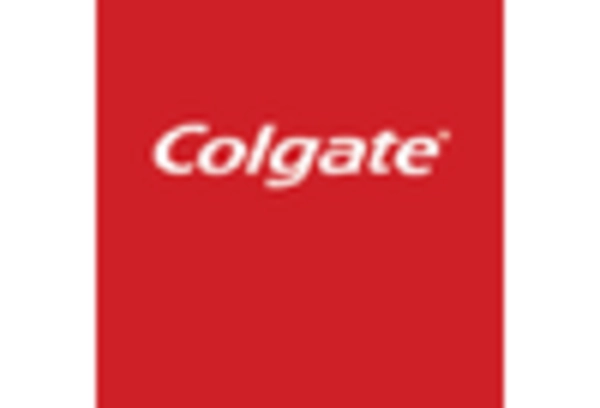Sustainability Initiatives
Sustainability has emerged as a pivotal driver in the shampoo Market, with consumers increasingly favoring eco-friendly products. Brands are adopting sustainable practices, such as using biodegradable packaging and reducing water usage in production. In 2025, it is estimated that around 45% of consumers in the US are willing to pay a premium for environmentally friendly products. This shift not only reflects changing consumer values but also compels manufacturers to innovate and align their offerings with sustainability goals. Consequently, companies that successfully integrate sustainability into their brand ethos are likely to thrive in the evolving shampoo Market.
Increasing Consumer Awareness
The shampoo Market is experiencing a notable shift as consumers become increasingly aware of the ingredients in their hair care products. This heightened awareness is driving demand for transparency and safety in formulations. As a result, brands are compelled to disclose ingredient sourcing and potential allergens, which influences purchasing decisions. In 2025, approximately 60% of consumers in the US reported that they actively seek out products with natural and organic ingredients. This trend is reshaping the competitive landscape, as companies that prioritize clean labels and ethical sourcing are likely to gain a competitive edge in the shampoo Market.
Growth of Men’s Grooming Products
The shampoo Market is experiencing a notable expansion in the segment dedicated to men's grooming products. As societal norms evolve, more men are investing in personal care, including specialized shampoos designed for their unique hair types and concerns. In 2025, the men's grooming segment is projected to account for approximately 25% of the total shampoo Market in the US. This growth indicates a shift in consumer behavior, where brands that cater to male consumers with tailored products are likely to see increased market share. The rise of men's grooming reflects broader trends in self-care and personal grooming.
Influence of Social Media and Influencers
Social media platforms and influencers play a crucial role in shaping consumer perceptions and trends within the shampoo Market. The rise of beauty influencers has led to increased visibility for various brands, often resulting in rapid sales growth. In 2025, it is estimated that 70% of consumers in the US are influenced by social media when making purchasing decisions related to hair care. This dynamic creates opportunities for brands to engage with their audience through targeted marketing campaigns and collaborations with popular influencers, thereby enhancing brand loyalty and driving sales in the shampoo Market.
Technological Advancements in Formulation
The shampoo Market is witnessing a surge in technological advancements that enhance product efficacy and consumer experience. Innovations such as microencapsulation and targeted delivery systems allow for more effective ingredient absorption and longer-lasting results. In 2025, the market for technologically advanced hair care products is projected to grow by 20%, indicating a strong consumer preference for high-performance formulations. This trend suggests that brands investing in research and development to create cutting-edge products may capture a larger share of the shampoo Market, appealing to consumers seeking superior results.

















Leave a Comment